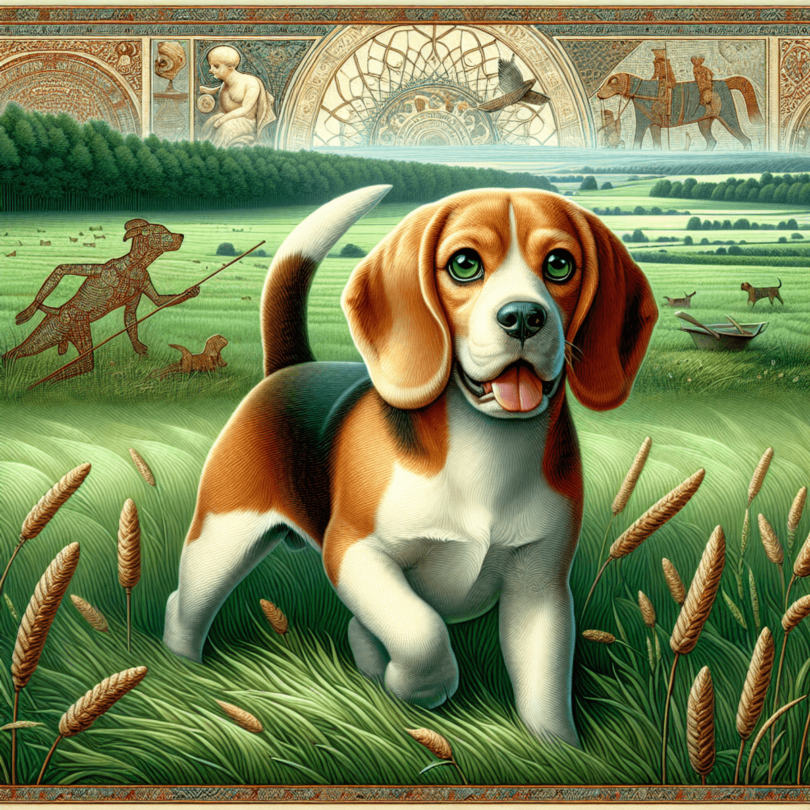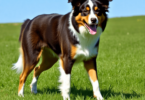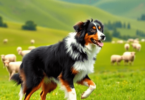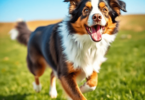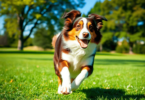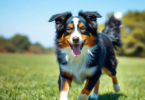The History of Beagles: From Hunting Hounds to Family Companions
Beagles are small but powerful scent hounds known for their excellent detection skills and friendly nature. With their expressive eyes, floppy ears, and wagging tails, Beagles have won the hearts of many families.
Learning about the history and origins of Beagles can help potential owners understand the breed’s unique traits and requirements. From their ancient ancestors to their current roles as pets and working dogs, Beagles have an interesting background that adds to their appeal and intelligence.
By exploring the history and origin of Beagles, you’ll discover what makes this breed so special—and why they could be the ideal addition to your family.
1. The Ancient Ancestors of the Beagle
Ever wondered what ancient dog breeds share their DNA with the delightful Beagle? Let’s take a trip back in time to uncover some fascinating early references.
Ancient Beagle Ancestors
Talbot Hound: This medieval hunting dog, often depicted in paintings and tapestries, is believed to be one of the Beagle’s ancestors. Known for its striking white coat and powerful sense of smell, the Talbot Hound was a favorite among hunters for tracking game.
St. Hubert Hound: Named after St. Hubert, the patron saint of hunters, this breed was renowned for its exceptional scent-tracking ability. Often referred to as the Bloodhound’s ancestor, its keen nose undoubtedly contributed to the development of our modern-day Beagle.
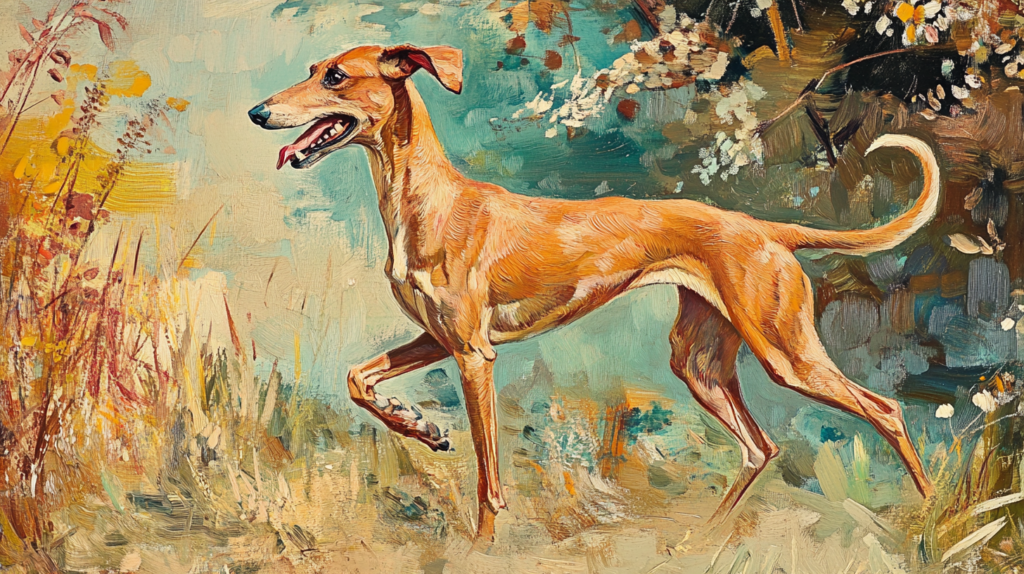
Shared Characteristics
These ancient scent hounds shared several traits that laid the groundwork for the Beagle breed:
- Exceptional Sense of Smell: Just like their descendants, ancient hounds such as the Talbot and St. Hubert were celebrated for their incredibly sharp noses.
- Sturdy Build: Both breeds had a robust physique ideal for long hunts—something we still see in today’s Beagles.
- Loyalty and Tenacity: These hounds were not just good at tracking; they were also loyal companions who displayed tenacity during hunts.
The characteristics we admire in Beagles today—like their boundless energy, loyalty, and incredible olfactory prowess—are rooted in these ancient breeds.
2. The Development of the Beagle Breed in Great Britain
The 19th century was a crucial time for the development of the Beagle breed. Reverend Phillip Honeywood played a significant role in this transformation. He established a breeding program around the 1830s, creating what would become known as Honeywood’s Beagles. This program marked the beginning of Beagles being viewed not just as hunting dogs but as a distinct breed.
Influences on the Modern Beagle
Influence from various other breeds helped shape the modern Beagle:
- North Country Beagle: Known for its excellent scenting ability and stamina, this breed contributed to the Beagle’s exceptional tracking skills.
- Southern Hound: Larger and slower, the Southern Hound brought endurance and a keen sense of smell to the genetic mix.
- Harrier: A medium-sized hound that added agility and speed, crucial traits for hunting small game like rabbits.
Establishing Standards for the Breed
As these breeds intermingled, breeders began to establish standards that would define what we recognize today as the classic Beagle. Physical characteristics, temperament, and abilities were meticulously selected to refine the breed’s unique qualities.
Key figures like Phillip Honeywood weren’t working alone. Breeders across Great Britain collaborated, sharing knowledge and selectively breeding to enhance desirable traits. This concerted effort led to a more standardized appearance and consistent behavior patterns in Beagles.
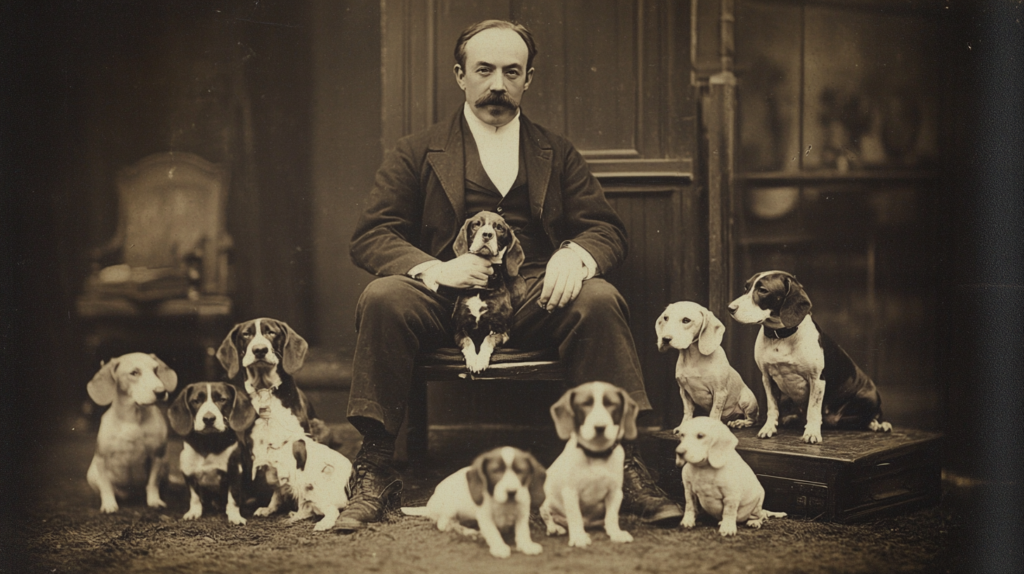
Distinctions Among Different Types of Beagles
During this era, distinctions emerged among different types of Beagles:
- Medium-sized variants
- Dwarf or lapdog varieties
- Rough-coated strains
Each type had its specific purpose and appeal, contributing to the versatility that makes Beagles beloved companions today.
With a rich tapestry of influences and careful breeding practices, modern Beagles embody a blend of history and functionality—perfectly suited for both work and play.
3. A Timeline of Significant Events in Beagle History
Tracking the Beagle breed timeline reveals a history as colorful as the breed itself:
- 1475: The name “Beagle” makes its first appearance in English literature. At this time, these dogs were celebrated for their hunting prowess and keen sense of smell.
- 16th Century: Queen Elizabeth I popularizes the “Pocket Beagles,” a smaller variety of the breed that could literally fit into pockets or saddlebags. These tiny hounds were not only adorable but also skilled hunters.
“The little beagle, which the Queen called her singing beagles, could sit in her lap and sing to her.” – Historical anecdote from Queen Elizabeth I’s era.
- 1830s: Reverend Phillip Honeywood establishes his famous breeding program. His efforts led to the development of the modern Beagle we recognize today.
- 1885: The American Kennel Club (AKC) formally recognizes the Beagle breed, cementing its status as a cherished dog in America. This milestone marks the beginning of a long and affectionate relationship between Americans and their Beagles.
Each event highlights a different aspect of Beagle history and origin, showcasing not just their hunting abilities but also their evolution into beloved pets. These milestones collectively illustrate how Beagles have been adored and refined through centuries, making them one of the most recognizable breeds today.
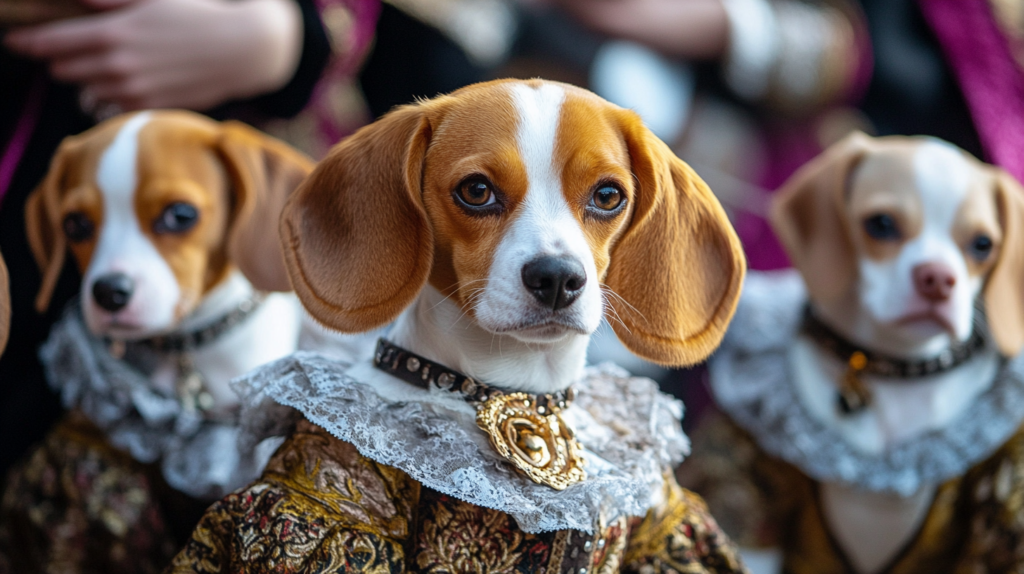
4. Famous Beagles That Shaped Popular Culture
Who can forget the iconic Snoopy from Charles M. Schulz’s Peanuts comic strip? Arguably the most famous Beagle in history, Snoopy has charmed audiences since his debut in 1950. With his vivid imagination and unending antics, Snoopy became more than just Charlie Brown’s pet; he evolved into a cultural icon. Whether he’s daydreaming as the World War I Flying Ace or simply lounging on his doghouse, Snoopy’s character embodies the playful and personable traits that make Beagles so beloved.
But Snoopy isn’t the only Beagle to leave a paw print on popular culture:
- Underdog: This canine superhero, featured in the 1960s animated TV series, captures hearts with his rhyming speech and heroic deeds.
- Gromit: While officially a different breed, some argue that Gromit from Wallace and Gromit shares many Beagle-like traits—intelligence, loyalty, and an endearing personality.
Beyond animation, real-life Beagles have also made headlines:
- Barry Manilow’s Beagle: The singer-songwriter’s love for his Beagle, Bagel, even led to Bagel appearing on several album covers!
These famous Beagles continue to influence how we view this delightful breed. Their appearances in media and art not only entertain but also bring attention to the unique charm of Beagles everywhere. It’s no wonder we celebrate National Beagle Day to honor their legacy!
![]()
5. The Evolution of the Beagle as a Family Companion
The transformation of Beagles from diligent hunting companions to beloved family pets is a tale of adaptability and charm. Originally bred for their keen sense of smell and relentless tracking abilities, these dogs excelled in the fields, sniffing out small game like rabbits and hares. But it wasn’t long before their friendly nature captivated hearts beyond the hunt.
Why Beagles Make Great Family Pets:
- Intelligence: Beagles are known for their sharp minds. This intelligence not only made them exceptional hunters but also makes them quick learners in a household setting.
- Friendly Temperament: Their congenial disposition ensures they get along well with children and other pets, making them ideal for family life.
- Playfulness: Ever the playful pooches, Beagles bring joy and laughter to any home with their spirited antics.
- Adaptability: Whether in a bustling city apartment or a sprawling countryside home, Beagles can adapt to various living environments as long as they get enough exercise.
Examples of Beagle Traits:
- Loyalty: Their loyalty is unmatched. Once a part of your family, they become steadfast companions who thrive on human interaction.
- Sociability: These dogs love being around people. They are less likely to exhibit aggressive behavior, making them safe choices for families with young children.
The evolution of the Beagle into a cherished family member showcases how their historical traits—intelligence, friendly temperament, and adaptability—have seamlessly translated into modern-day companionship roles.
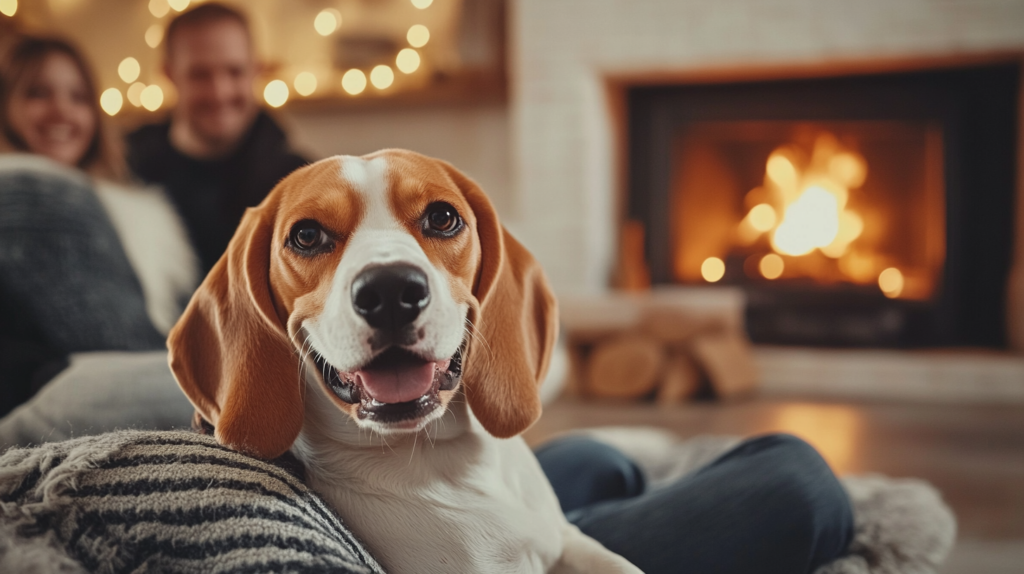
6. Understanding Modern Beagles: Characteristics and Traits
Beagles are a delightful mix of intelligence, charm, and boundless energy. Dive into the nitty-gritty details of what makes this breed so special.
Size and Weight
Beagles typically come in two size categories:
- 13-inch Beagle: These little fellows stand up to 13 inches tall at the shoulder.
- 15-inch Beagle: Slightly larger, measuring between 13 and 15 inches tall.
In terms of weight, they generally tip the scales between 20 to 30 pounds. This compact size makes them perfect for families who want a dog that’s not too big but still sturdy enough for outdoor adventures.

Physical Characteristics
Beagles are renowned for their expressive brown or hazel eyes, which give them a perpetually curious and friendly appearance. Their ears are long, floppy, and set low on their head—perfect for catching all those interesting scents! The tail is usually carried high but never curled over the back, often wagging happily as they explore their surroundings.
Health Issues
While generally robust, Beagles can be prone to certain health issues:
- Hip Dysplasia: A genetic condition affecting the hip joint.
- Epilepsy: Seizure disorders can occur in some Beagles.
- Hypothyroidism: Low thyroid levels leading to weight gain and lethargy.
- Ear Infections: Their floppy ears can trap moisture and dirt, making them susceptible.
Regular vet check-ups and a healthy diet can help mitigate these issues.
Coat Colors
Beagles boast an array of coat colors that add to their charm. Common color combinations include:
- Tri-color: Black, white, and tan—a classic look!
- Lemon: A pale yellow with white.
- Red and White: Rich reddish patches against a white background.
- Blue Tick or Red Tick: Speckled patterns often seen in hunting lines.
Their short hair is easy to groom, requiring just regular brushing to keep it sleek and shiny.
Understanding these characteristics equips you with insights into what makes the Beagle such a unique and beloved breed.
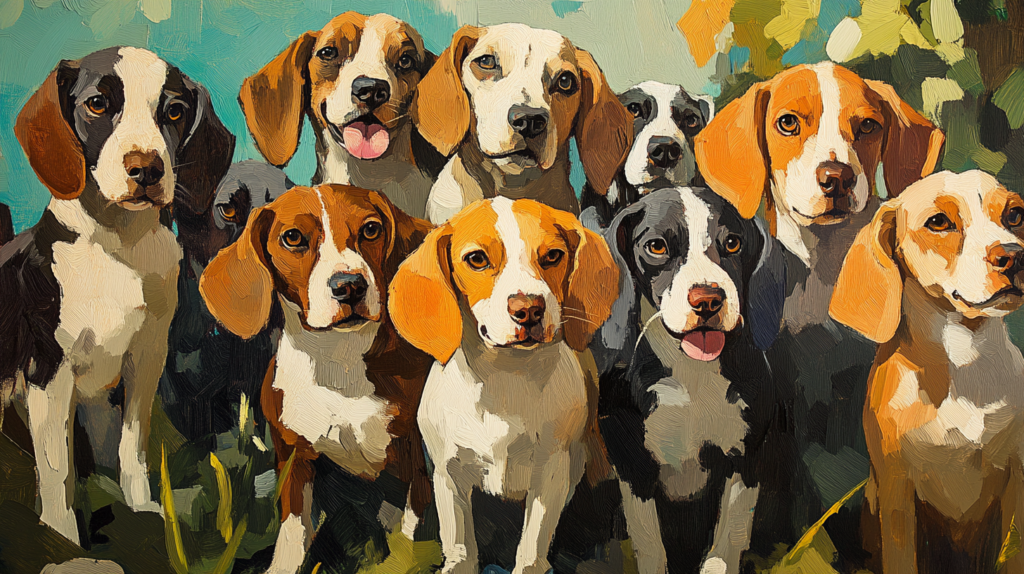
7. The Beagle’s Remarkable Scent Detection Abilities: From Hunting Dogs to Detection Partners
Beagles have an incredible sense of smell! Their amazing ability to detect scents comes from their history as hunting dogs. They are known as scent hounds because they were specifically bred to track small animals like rabbits and hares. With approximately 225 million scent receptors (compared to only 5 million in humans), Beagles have one of the most advanced noses in the dog world.
Historical Role in Hunting
- Small Game Hunters: In ancient times, Beagles were highly valued for their skill in following complex scent trails. Their exceptional sense of smell allowed hunters to easily track and catch small animals.
- Scent Hound Heritage: Breeds such as the Talbot Hound and St. Hubert Hound played a significant role in developing the modern Beagle by passing down their scent-tracking abilities. This legacy can be seen in every sniff and wag of a Beagle today.
Modern-Day Detection Champions
Today, those same sniffing skills have been repurposed for some rather important jobs:
- Law Enforcement: Beagles are employed by police and customs agencies worldwide. Their keen noses help detect illegal substances, explosives, and even currency!
- Agriculture: These dogs are also invaluable in agricultural settings, where they help identify pests or contraband food items that could harm ecosystems.
“Beagles’ noses are so powerful, they can smell a single spoonful of sugar diluted in two Olympic-sized swimming pools!”
Despite their transition from fields and forests to airports and borders, these furry detectives maintain the same enthusiasm and dedication that made them excellent hunters centuries ago.
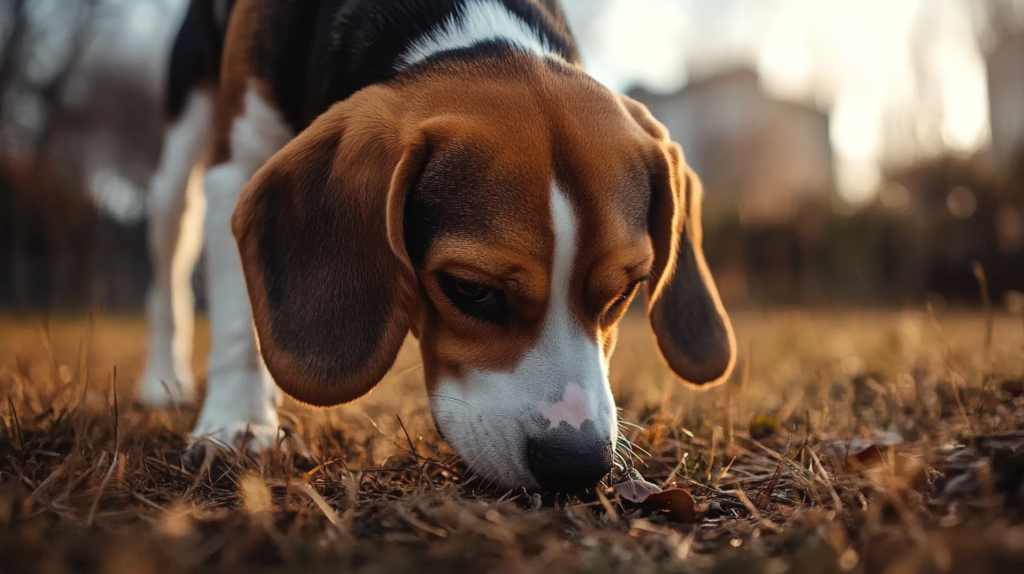
Conclusion: Embracing the Rich Heritage of the Beagle Breed
Adopting a Beagle means embracing a dog with a storied past. When you learn about Beagle history and understand Beagle origins, it enriches your appreciation for this delightful breed.
Key Takeaways for Prospective Beagle Owners:
- Respect the Heritage: Knowing the rich tapestry of Beagle history and origin helps in understanding their unique traits and behaviors.
- Be a Responsible Parent: Acknowledge both their historical role as skilled hunters and their modern-day status as cherished family pets.
Owning a Beagle is not just about enjoying their companionship today but also celebrating centuries of evolution that have shaped them into the lovable, intelligent creatures they are. Understanding their past can make you a more informed and empathetic owner, ensuring your Beagle thrives in its forever home.
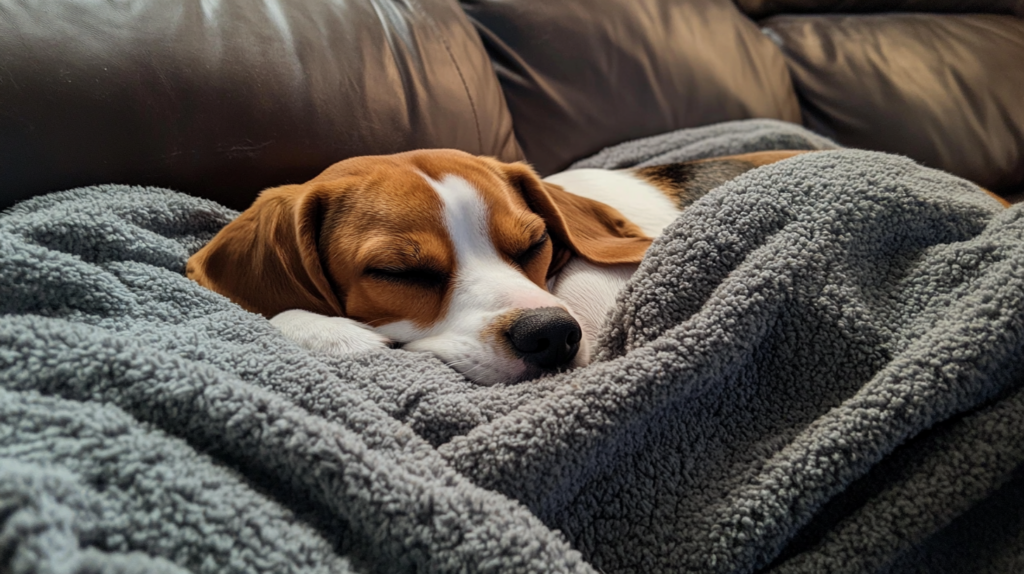
FAQs (Frequently Asked Questions)
What is the historical significance of the Beagle breed?
The Beagle breed has a rich history that highlights its evolution from ancient scent hounds to a beloved family pet. Understanding its origins helps prospective owners appreciate the breed’s unique characteristics and needs.
What are some ancient ancestors of the Beagle?
The Beagle’s early ancestors include breeds like the Talbot Hound and St. Hubert Hound. These ancient scent hounds contributed characteristics that are integral to the development of the modern Beagle.
How did the Beagle breed develop in Great Britain?
In the 19th century, the Beagle transitioned from being a hunting dog to a defined breed, largely influenced by figures like Reverend Phillip Honeywood. Breeds such as the North Country Beagle, Southern Hound, and Harrier played key roles in establishing breeding standards.
What are some notable milestones in Beagle history?
Significant events in Beagle history include early mentions in literature dating back to 1475, Queen Elizabeth I’s ownership of pocket beagles, and formal recognition by the American Kennel Club (AKC) in 1885.
How have Beagles evolved as family companions?
Beagles have transformed from hunting companions into cherished family pets due to their amiable nature, intelligence, and friendly temperament, making them well-suited for family life.
What are some key characteristics of modern Beagles?
Modern Beagles typically exhibit specific physical traits such as size and weight variations, along with common health issues. They also come in various coat colors, contributing to their popularity as pets.
